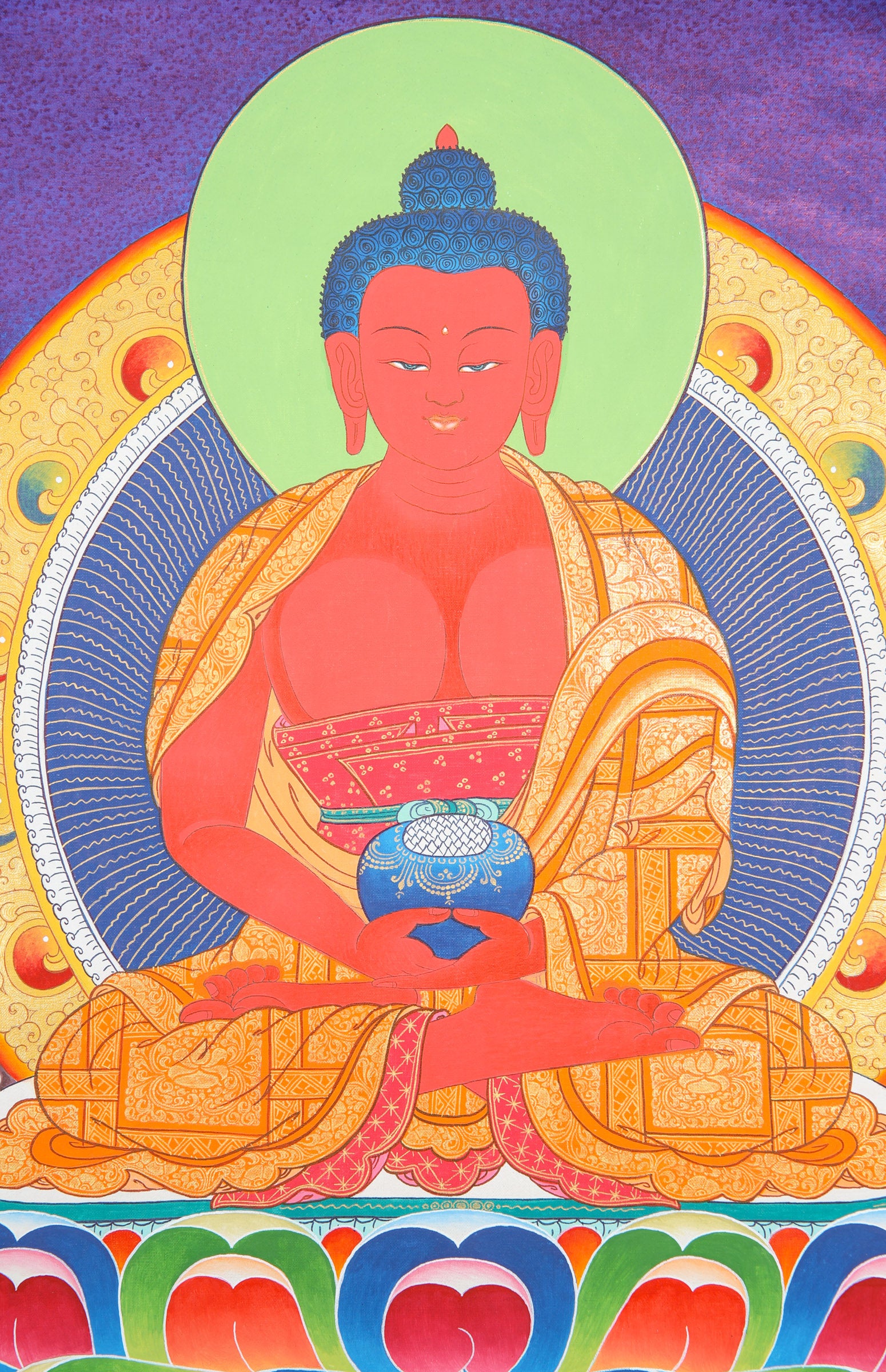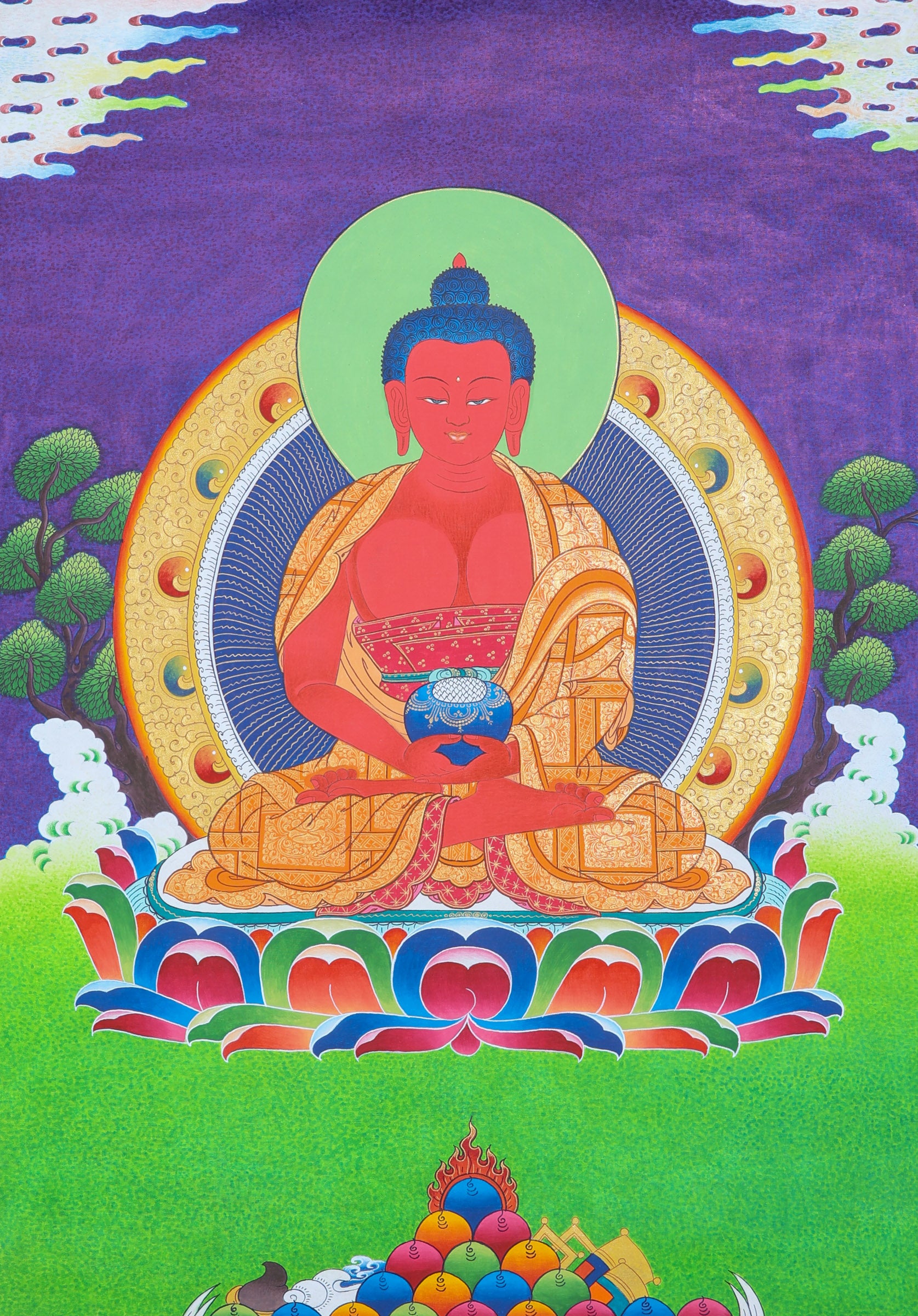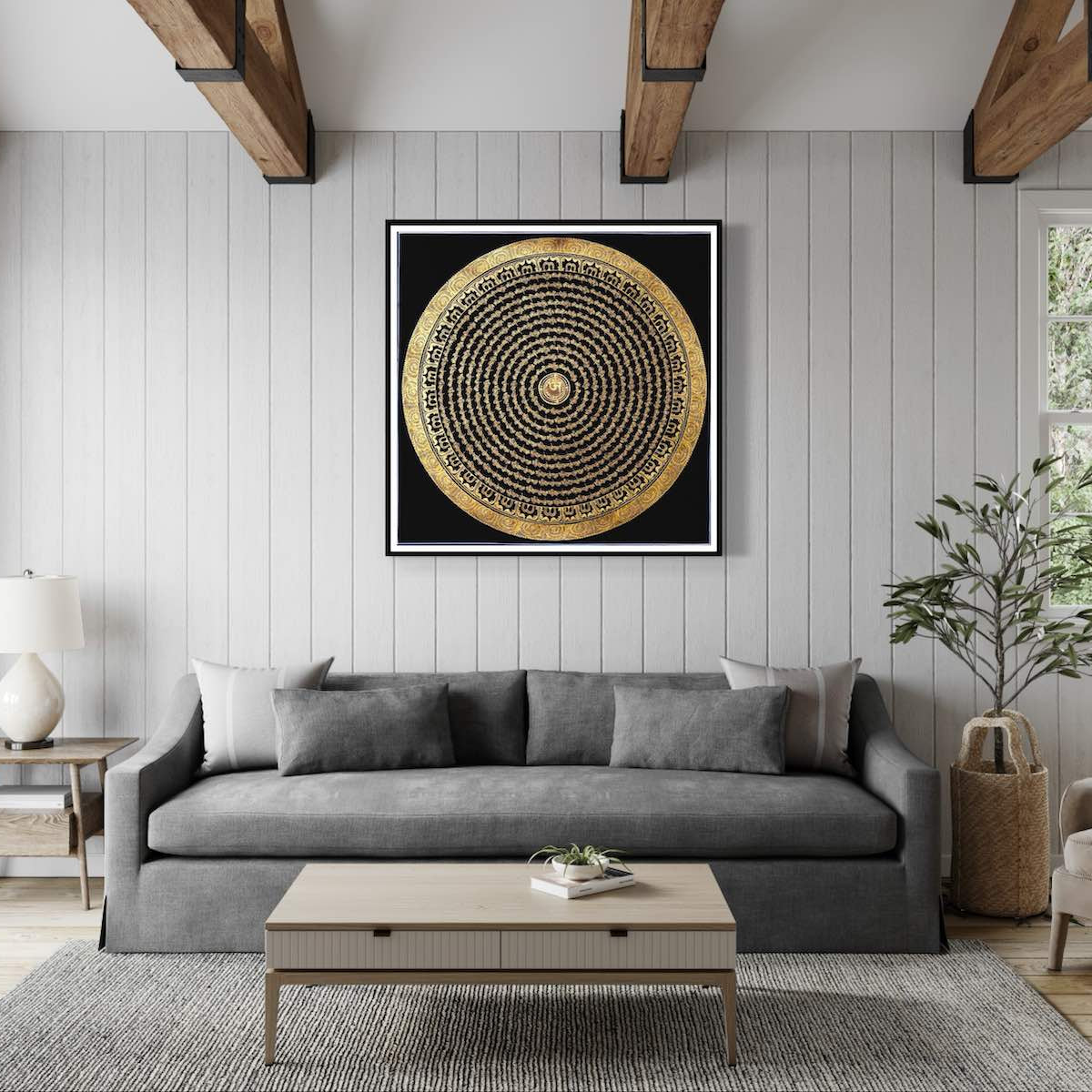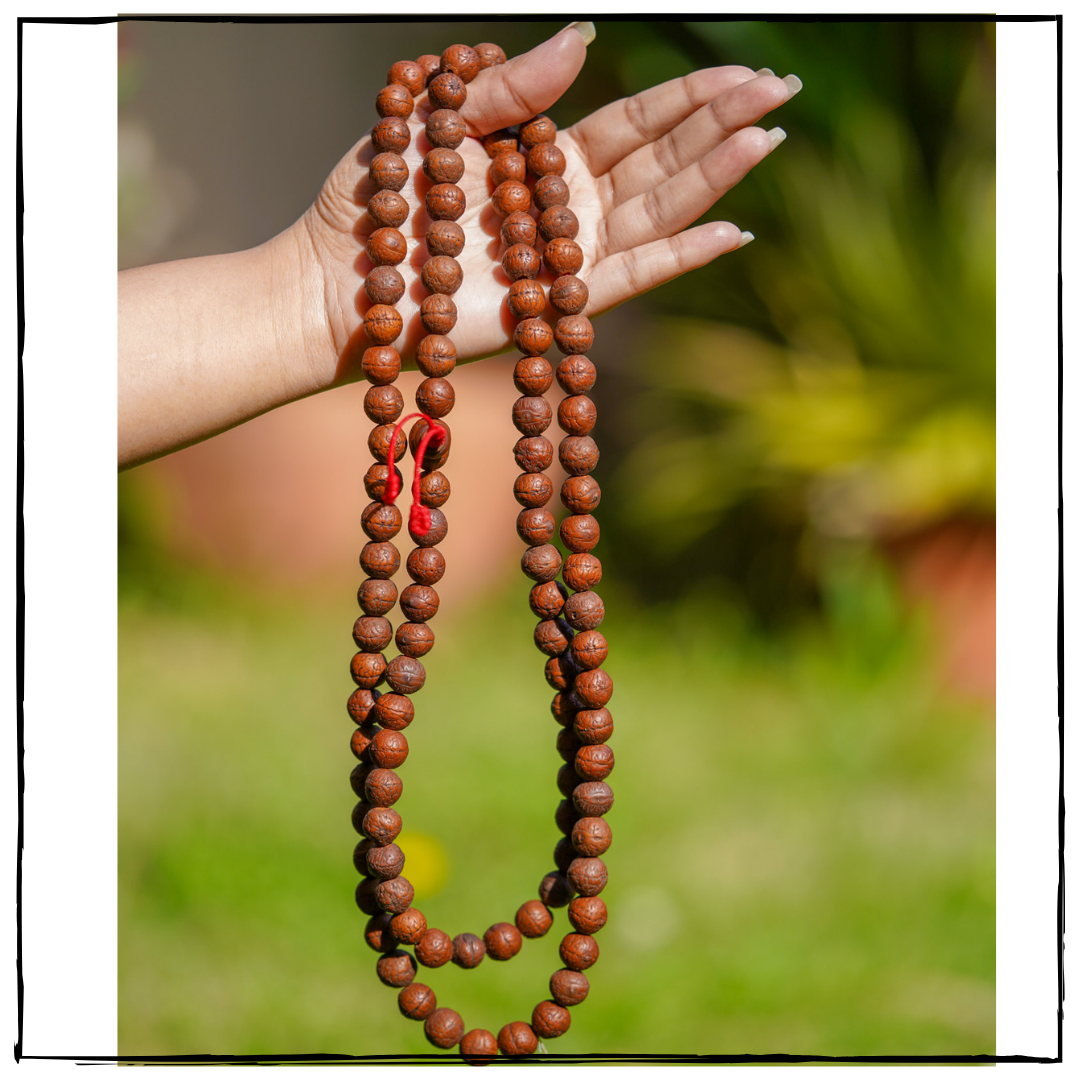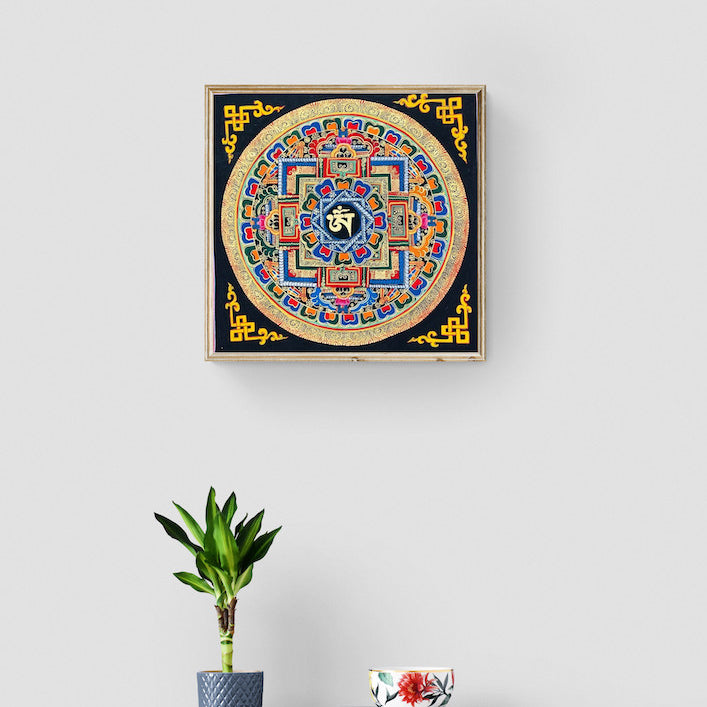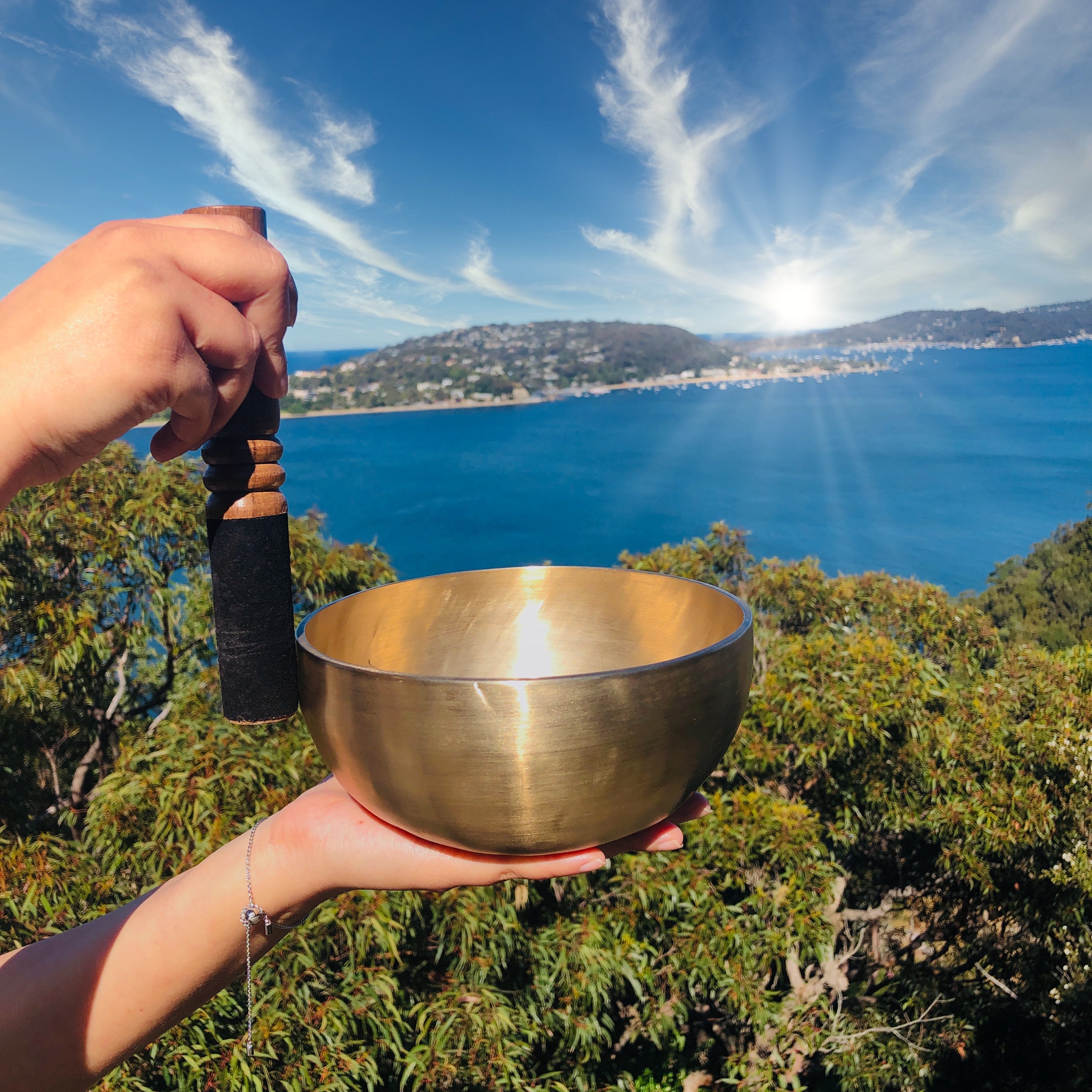Amitabha Buddha Thangka Painting
Couldn't load pickup availability
Description
This Amitabha Buddha Thangka Painting is an artistic piece of traditional Tibetan Buddhist art honoring and depicting Amitabha Buddha, one of the Five Dhyani Buddhas connected to Sukhavati, in the Western Pure Land. This painting is used to reflect upon the virtues and blessings of Amitabha Buddha.
Amitabha Buddha is depicted in a meditative position, performing the Dhyana mudra in his lap. He is represented with a red body, signifying the transformation of desire into wisdom, compassion, and love. Notable features include a crown symbolizing enlightenment, an urna (dot on the forehead) representing wisdom, extended earlobes showing his capacity to hear the distress of living beings, and an alms bowl representing his practice of generosity.
Amitabha Buddha Thangka paintings are used in Tibetan Buddhist rituals, ceremonies, and meditation practices to invoke the qualities of love, compassion, and the aspiration of rebirth in the Buddha's Western Pure Land. Amitabha Buddha has great cultural and religious importance in Tibetan Buddhism and other Buddhist traditions, with devotees turning to him for guidance in achieving spiritual goals and seeking rebirth in his pure realm. This painting is appreciated as religious and spiritual artifacts, as well as collectible works of art.
Product Specification:
- Hand Painted
- Materials: Semi-Precious Natural Minerals
- Base: Cotton Canvas
- Origination: Nepal

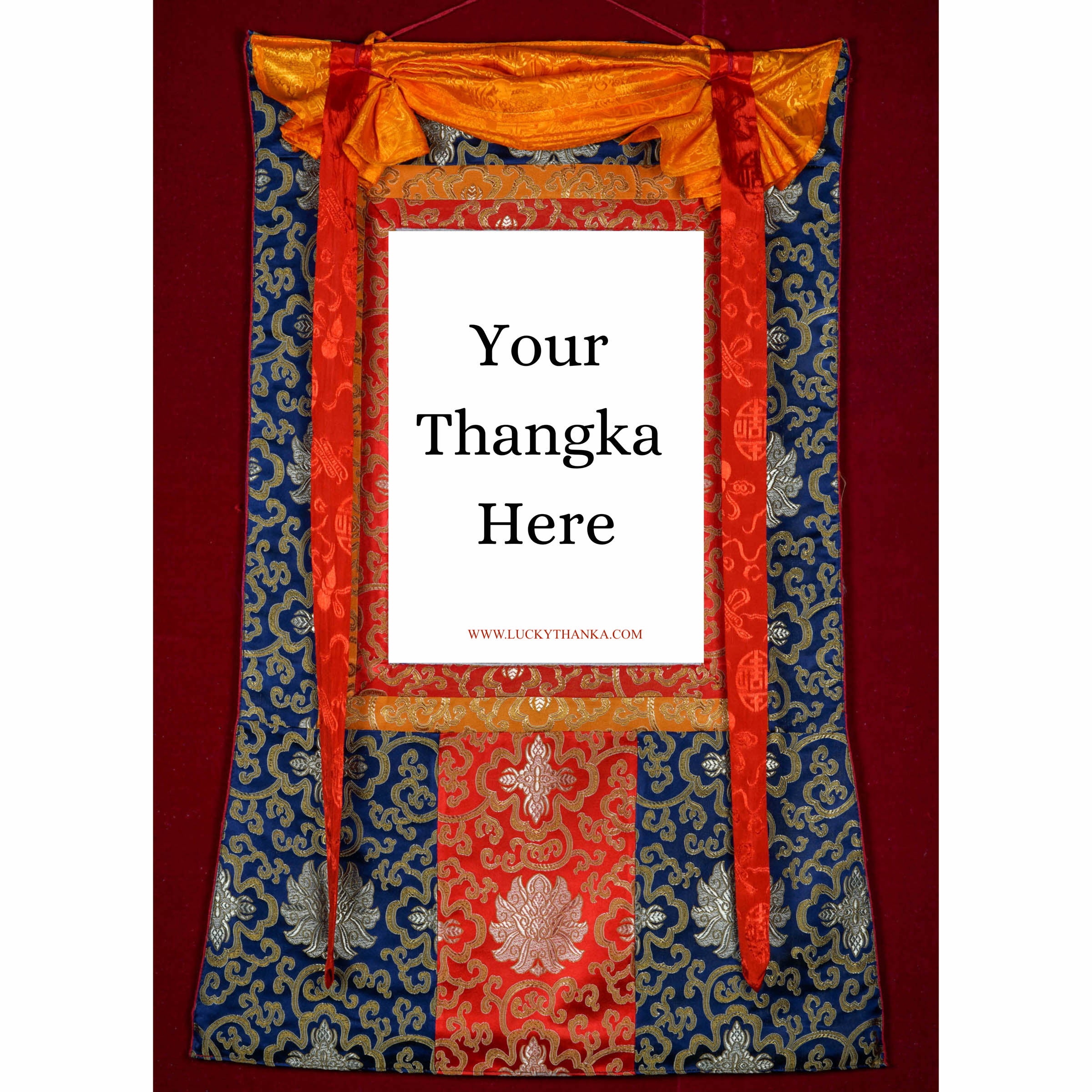
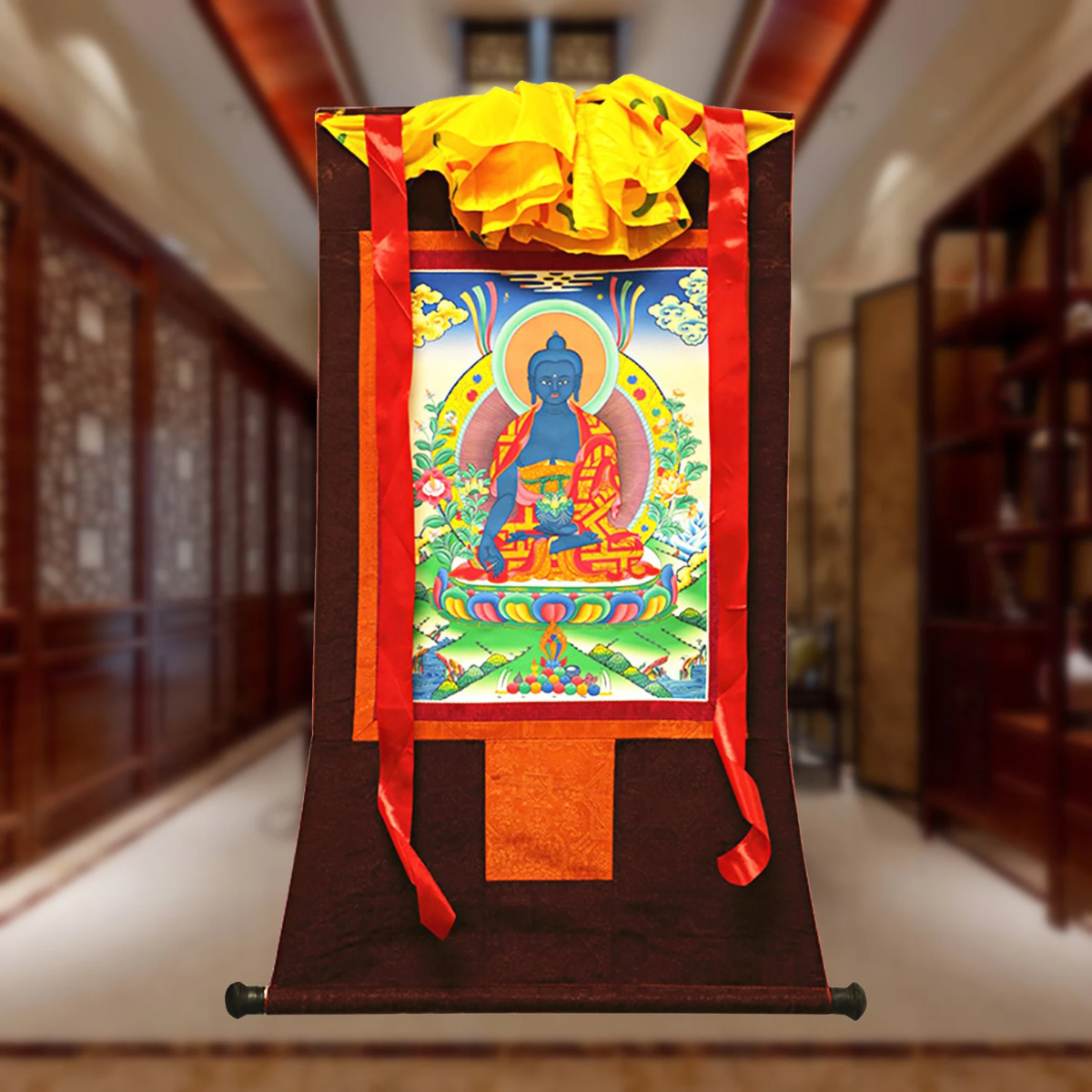
Hand Embroidery Brocade
Want to add a Brocade to your beautiful Thangka Painting? Traditional Style Brocade has been one of the most popular form of mounting as it has a greater religious merit.
Note: Make sure you have added the Thangka to your cart first.
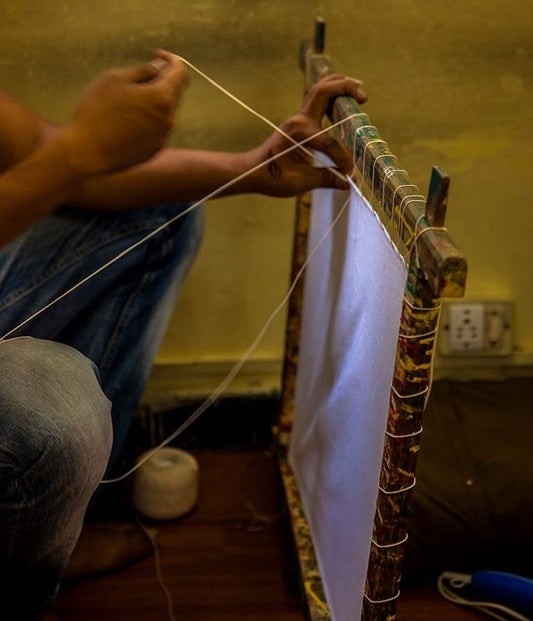
100% Cotton Canvas
Preparing the Cotton canvas before starting to paint a Thangka. This process includes washing, drying, stretching, sizing and everything needed to make a perfect base for the thangka to last for centuries.
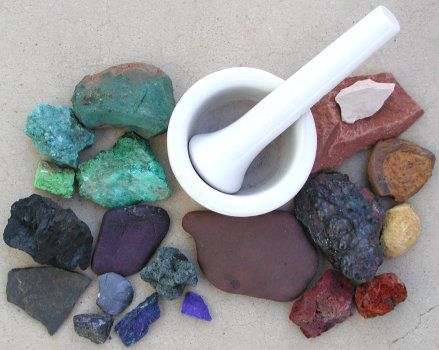
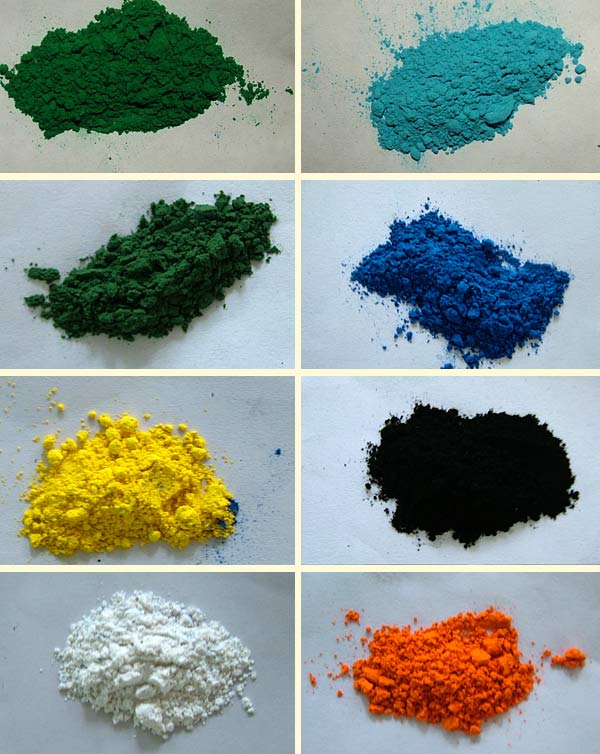
Natural Minerals
Thangka Paintings are painted using the natural minerals. These are firstly grind into the powder form and then used in the thangka as a paint.




